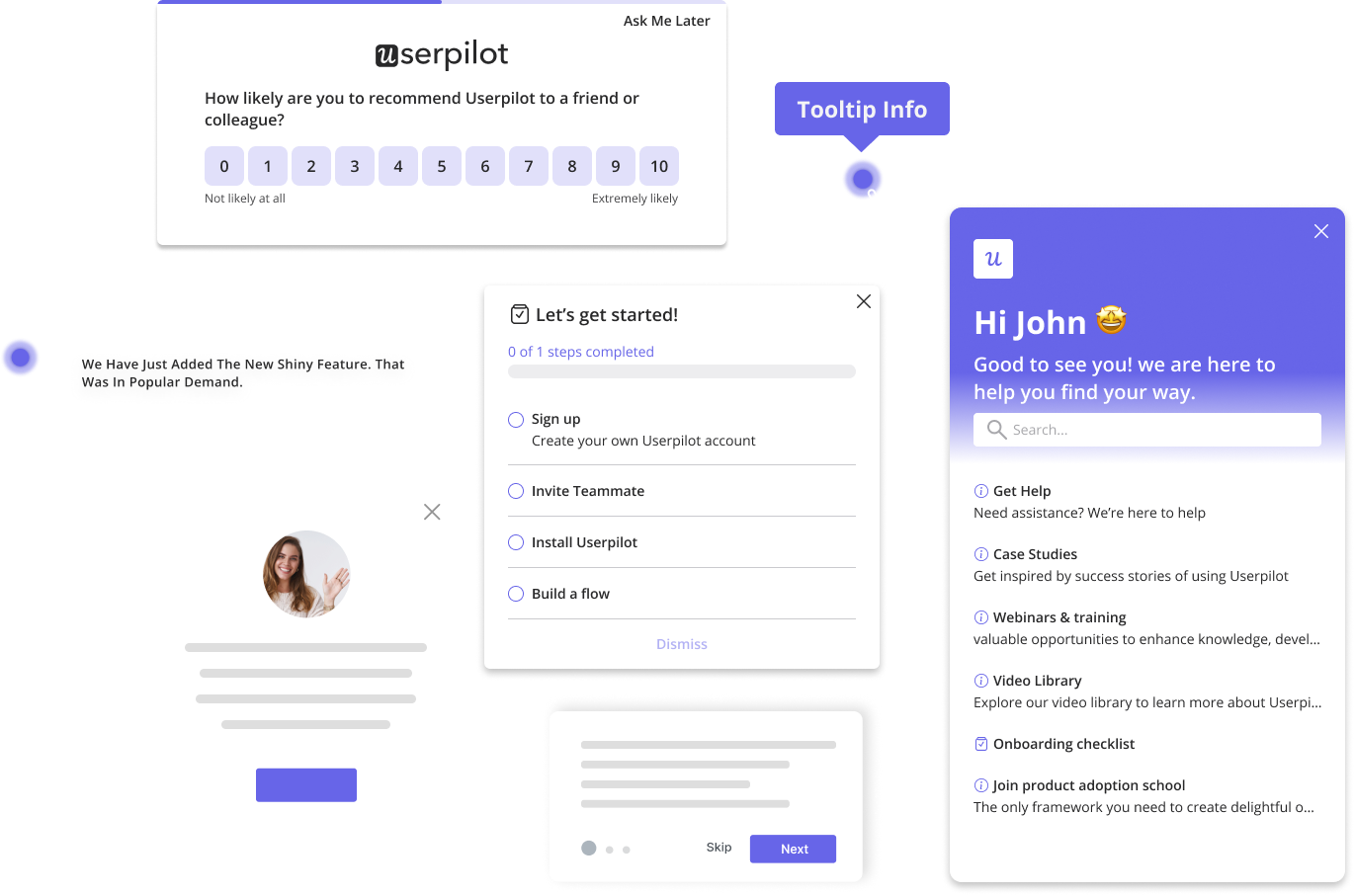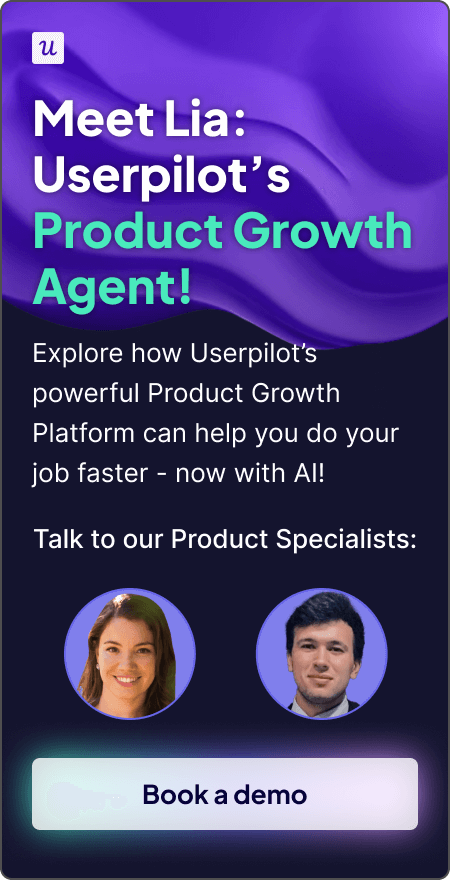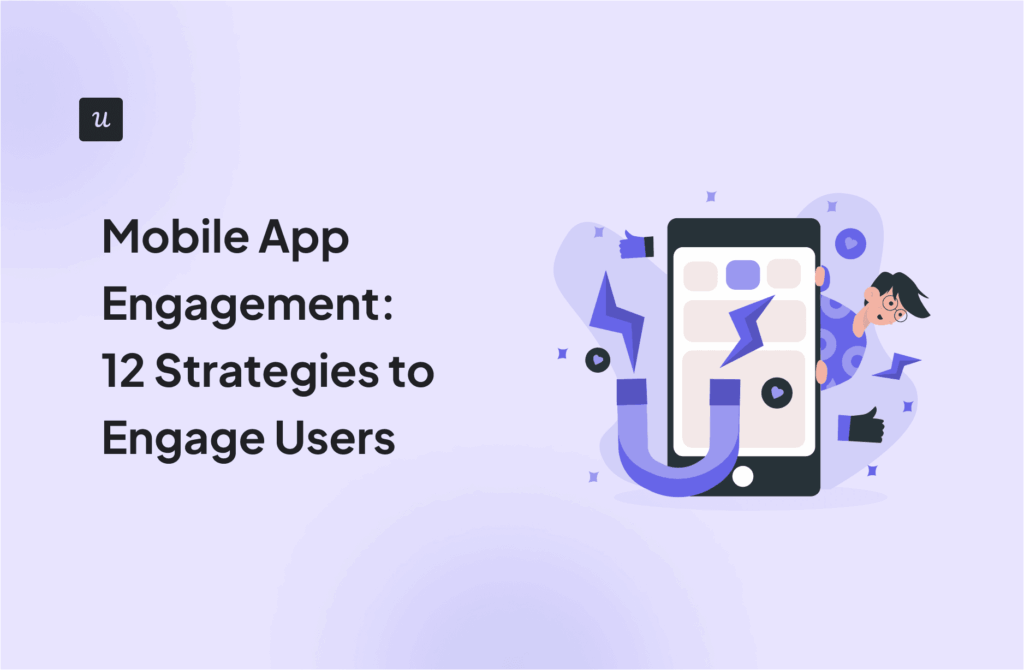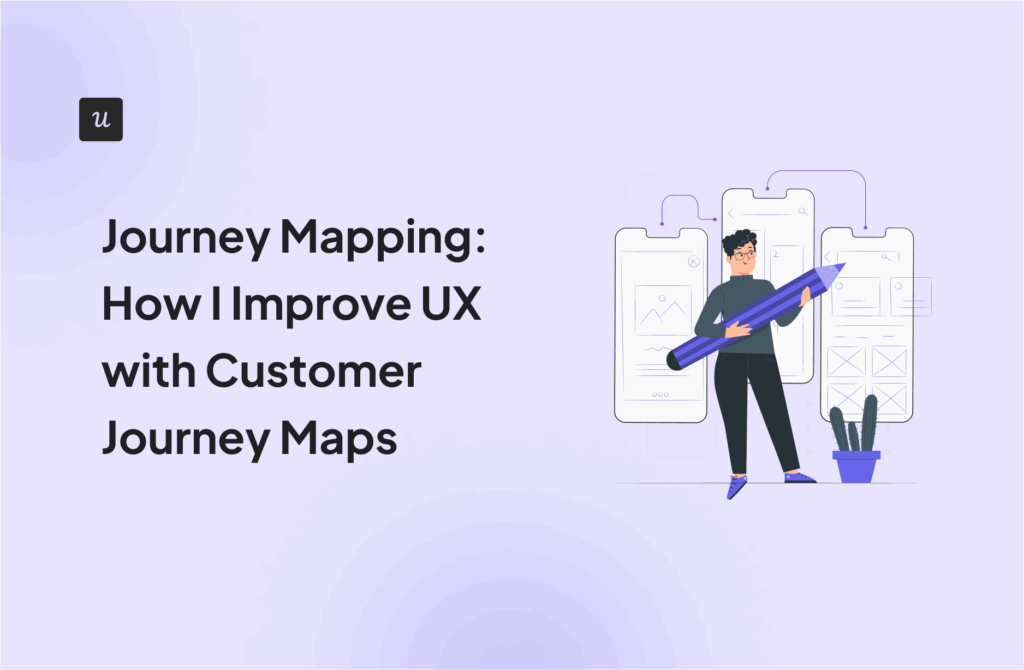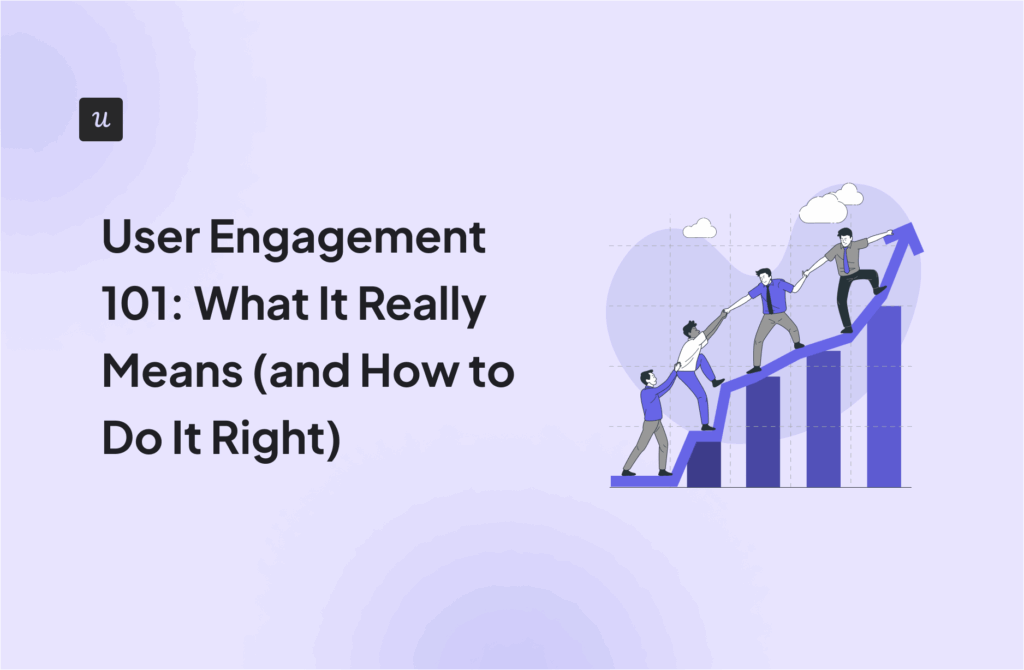
I’ve worked on enough SaaS growth campaigns to know this: loyalty programs in our world look very different from B2C. The “accumulate and redeem” loyalty model that’s common with companies like Sephora Beauty Insider points and Starbucks Rewards is rarely used by B2B SaaS businesses. Having reviewed several SaaS loyalty program email examples, I’ve noticed the best ones are typically built around value-based loyalty programs that reward users and drive engagement. Common tactics include:
- Referral incentives
- Feedback rewards
- Upgrade discounts
- Milestone celebrations
- Invitations to alpha/beta tests
In this article, I’ll share some of the best customer loyalty programs I’ve seen and highlight how they use the tactics above to boost retention and foster genuine brand loyalty.
What’s your main goal with loyalty program emails?
Which type of loyalty program email example are you most interested in?
Ready to build loyalty program email campaigns that work?
See how Userpilot can help you implement these loyalty program email examples with powerful, code-free tools. Create targeted, automated campaigns that turn users into loyal fans.
Try Userpilot Now
See Why 1,000+ Teams Choose Userpilot
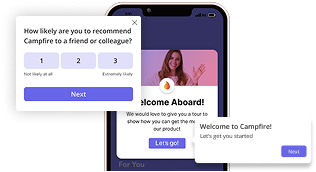
#1. Dropbox’s referral program email
Dropbox’s “Thanks for your referral” message is a textbook peer‑to‑peer loyalty program email. They praise you for inviting a friend, and customers receive bonus storage when they sign up.

In this example, the subject line (“Thanks for your Dropbox referral”) feels personal. Also, the headline, “You’re awesome,” reinforces that positive emotion before they mention any rewards.
I’ve found this approach works brilliantly for network‑driven tools, especially those used by tightly knit teams like designers or engineers.
By tapping into peer trust, Dropbox can turn users into loyal brand advocates and drive customer retention. Especially when we collaborate in groups, a colleague’s recommendation carries far more weight than a generic marketing email.
If you’re running a referral email, I recommend these tips:
- Personalize the subject line with the friend’s name (“Jane just joined thanks to you!”).
- Break down progress (“You’ve referred 2 of 5 friends: earn 1 GB more!”) with a simple progress bar.
- Swap the generic “upgrade” link for a clear, single CTA button (“Invite more friends”).
#2. Asana’s rewards program for product feedback
This is an example of a rewards-for-feedback customer loyalty program. Asana asks you to spare 15 minutes to complete a survey and offer entry into a $100 prize draw. The subject line is also direct: “What do you think of Asana?”

Rewards programs like these work best when we’re targeting the most loyal customers who care about shaping our product roadmap. Offering personalized rewards, such as gift cards tied to a user’s favorite tools or swag that reflects their usage patterns, can drive even higher response rates. However, offering a significant reward risks attracting superficial answers rather than thoughtful customer feedback.
If you try this, tie exclusive rewards to specific outcomes. For example, “Submit a feature idea and earn a $10 Amazon gift card,” so users know exactly what action you want. Consider offering tiered incentives, such as small credits for quick polls and larger prizes for in-depth interviews, to maintain the quality of feedback.
#3. Calendly’s trial extension deals
Calendly understands that sometimes we need more time to see if a tool clicks. Their email pops up when your trial is winding down and offers a 7-day restart, no strings attached. Right off the bat, you see a clear value proposition and a single, bold CTA: “Restart your free trial.” It’s simple and straight to the point.

In my opinion, this kind of trial-extension email is a lifeline for fence-sitters like new customers who came close but didn’t quite hit that ‘Aha!’ moment. It’s also suitable for dormant customers who dipped their toes in but haven’t explored the advanced features.
An ideal time to send this type of email would be as soon as your analytics show a drop in key activity. I advise product teams to automate the email based on real usage data to recover lost momentum and encourage repeat business.
You can also try:
- Tiered loyalty programs: Offer a 3‑day bump for light users and a full 7‑day restart for power users.
- Personalized stats: Show “You’ve scheduled 2 of 5 meetings. Here’s 7 more days to hit your goal.”
#4. Notion’s milestone celebration email
Notion’s “Thank you. 100 million of you.” message is a masterclass in milestone celebration that resonates deeply with high-value customers. The loyalty program email example opens with a personal note from Ivan, sharing photos of the team at 1,000 users and recounting the “lost years” before Notion 2.0 took off on Product Hunt. It feels like a handwritten letter, rich with gratitude and nostalgia.

I love how this approach taps into a shared journey. It’s not just “look at our numbers;” it’s “thank you for being part of this story.” That emotional connection builds real community and reminds customers why they’ve stuck around.
Milestone emails shine for established products with passionate followings and are a powerful component of your B2B SaaS marketing strategy. If you’ve got users who’ve seen you grow, they’ll appreciate a peek behind the curtain.
Here’s how you can take this example further:
- Celebrate user‑specific milestones too, to make every member feel seen.
- Embed an interactive timeline so readers can go through key moments.
- Invite users to share their own story of using your product for a future email feature.
#5. Fibbler’s exclusive deals for a premium feature trial
One of the things I like about this email is how it greets you like a teammate and invites a simple reply to unlock Pro features for a few weeks. Fibbler makes it feel less like a hard sell and more like a friend offering you a sneak peek at what’s next.

This reply-to-unlock approach creates urgency without being pushy. It works best when users have experienced your product’s value, but haven’t felt confident enough to upgrade. I like the personal tone because it cuts through inbox noise, but asking for an email reply can introduce friction.
I recommend targeting customers who have hit a clear usage milestone. Then, frame your offer around their achievement. Like, “You’ve run 5 campaigns—unlock Pro to schedule by time zone and receive pause notifications.”
You can use this in your own strategy by:
- Replacing the email reply with a single, in-email button that instantly activates the trial.
- Adding a “What You’re Missing” comparison chart to highlight the advantages of an upgrade at a glance.
#6. Apollo’s closed beta invitation for new feature early access
Apollo’s email uses one of the most powerful loyalty levers: exclusive perks. The subject line promises early access, and the body frames the beta as a limited-seating lab where you’ll help shape the product’s future. Plus, you earn free credits in the process.

I like this loyalty program email example because it engages customers and drives FOMO. When you use a tool well enough, the chance to be the first on a new relevant feature feels irresistible. However, if you cast the net too wide, you risk filling seats with casual users who won’t provide quality feedback.
So, narrow your invite to users who fit a specific criterion based on product or feature usage. You can also include a calendar link for a 15‑minute feedback session as part of the beta reward, so customers feel valued.
#7. Xtension’s review invitation for loyal customers to earn rewards
This email asks users to post on G2, Capterra, or Trustpilot in exchange for a $36 credit. Then, it sweetens the deal with a $20 gift card for the first 85 reviewers. I like how it includes direct links to the platforms for users to leave reviews.

From my experience, rewarding customers for reviews can be a win-win: you boost social reviews and thank users who’ve stuck with you. However, as I mentioned in a similar example, large incentives can attract quick, low-quality reviews if your reach is too broad.
If you’re considering who to ask, target customers with at least six months’ tenure and regular logins. This approach will increase the chances that you’ll get thoughtful feedback that reflects real product use.
#8. Zoom’s account expansion offer as a birthday celebration
While it’s typical to celebrate your customers’ birthdays, it’s fine to flip the script and celebrate your product’s birthdays. Zoom’s birthday celebration email feels like a party invite (complete with confetti) and slips in a 15% off discount on Zoom Workplace Pro annual plans as the birthday gift.

This product-milestone approach is ideal for account expansion. It fosters a sense of community as customers feel they’re a part of Zoom’s journey. From the design to the personalized first line that “this milestone wouldn’t be possible without you,” everyone feels included in the celebration.
Schedule a one-off email marketing campaign on every anniversary to give repeat customers exclusive benefits. I’d add a countdown timer to drive some urgency while keeping the festive vibe.
#9. Gamma’s free credits to boost customer loyalty
Gamma’s loyalty program email example is a classic free‑credit loyalty play aimed at re-engaging segments of your customer base. It starts by telling you the product has gotten better. Then, it celebrates its milestone of 50 million users and immediately lets you know you’ve been topped up with 400 credits to explore Gamma’s latest AI features.

This type of email encourages users to try paid capabilities, save money, and drive repeat purchases. That said, if you hand out credits recklessly, you might flood your support team with questions or attract loyalty program sign-ups from users who are less likely to stick around.
A free-credit boost reignites curiosity, drives repeat visits, and helps retain customers. So, use it to target users who signed up but haven’t used your product in some time, like 30 days.
I recommend tying these drops to a feature launch. Then, send a follow-up “How to redeem” walkthrough email to guide users through the process.
#10. Creatify’s bonus points for product feedback
Creatify’s email motivates customers to earn points for giving feedback. The subject line “We’d love your feedback” feels friendly, and the bold callout “Your feedback = 100 credits” immediately tells what’s in it for you. A quick link to schedule a call reduces the friction in the request process.

In my opinion, this points program works excellently when you send emails to users immediately after they complete an action, like publishing their first project. The timing, combined with the promise of rewards points, turns this feedback request email into an attractive offer.
I’d make this loyalty email better by:
- Showing how many points they have in the email (like, “You have 200 credits; earn 100 more by telling us what you love”) to reinforce immediate value.
- Offering more loyalty points for follow‑up surveys (50 credits for a quick poll, 150 for an in‑depth interview).
- Including a progress bar and points balance toward loyalty program members’ next reward tier to gamify the experience and boost customer engagement.
#11. Grammarly’s personalized year‑end customer experience review
This email is a spot-on example of how to use ideas like Spotify Wrapped in B2B SaaS. Grammarly’s year‑in‑review loyalty play takes your usage data, such as your top tone and frequency of generative AI use. Then, it packages these valuable insights into a visually striking, shareable recap that celebrates your customer journey and feels tailor‑made for you.
As if that’s not enough, it follows up with an exclusive upgrade offer to Grammarly Premium. With this, the upsell feels like a natural next step rather than a cold ask.

For power users, this type of email rekindles appreciation of the product and reminds them why they engage with it often. If you want to use this approach, your recap shouldn’t lean too hard on the upsell so that it doesn’t feel like a simple promotion.
While you can send recap emails to all users, they’re most impactful for your most active ones. Well, the more data you have, the more meaningful and personalized the recap becomes.
I’d recommend adding shareable social cards to encourage customers to show it to their friends. Also, add personalized, actionable tips based on usage patterns to offer more value.
Build effective loyalty program email campaigns with Userpilot!
From crafting your very first loyalty program launch email to building ongoing campaigns, our tool helps you implement all of these loyalty program email examples using dynamic or fixed triggers, so you’re always reaching the right customers at the right time. With Userpilot, you can choose a dynamic condition like sending an email to users who meet criteria now and in the future. You can also use fixed triggers, like when a user reaches a milestone.

Here’s an example of how I’d set it up:
- Define your conditions: For a trial extension email, I’d use a dynamic trigger condition like “Completed fewer than 3 meetings in the past 7 days.”
- Choose the send type: Dynamic, so any user who dips below that usage threshold automatically gets the email.
- Schedule frequency: Recurring per user, sent immediately whenever they match the condition.
With this level of precision, you’ll keep customers engaged without typing a single line of code. Book a demo to see more of how you can start building campaigns around contextual emails that drive genuine loyalty.

